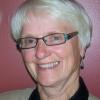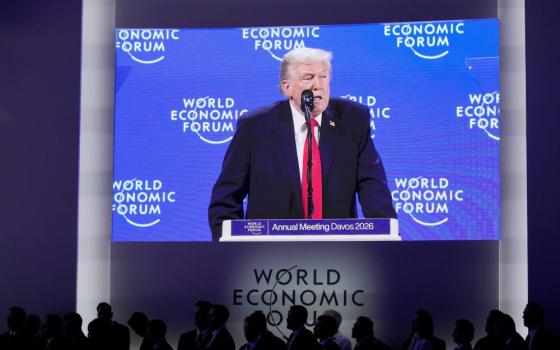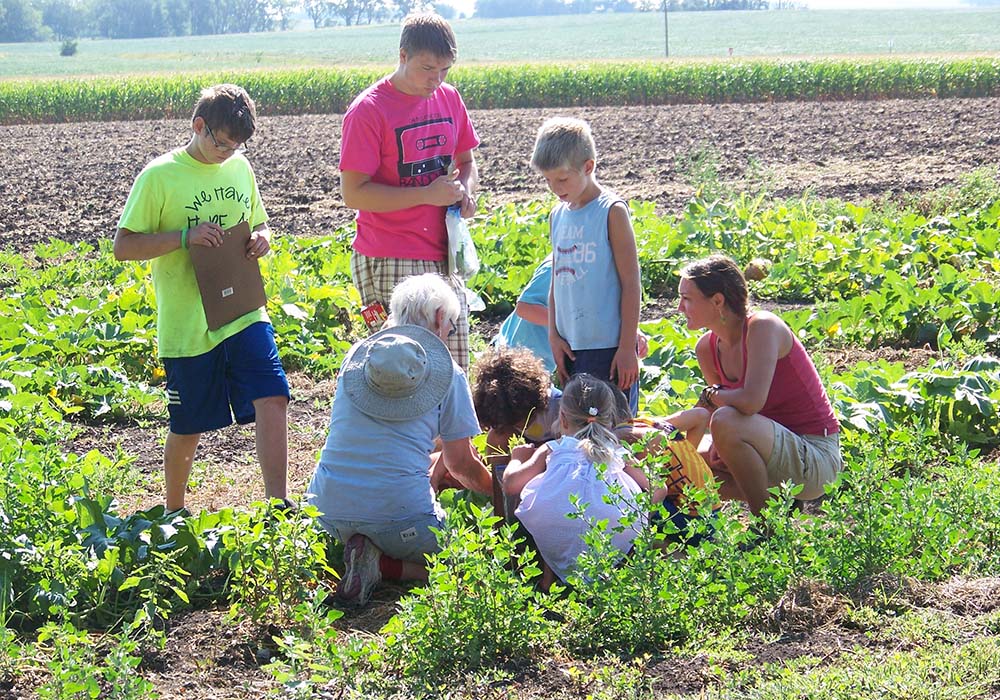
Sr. Kathleen "Kay" Fernholz , a School Sister of Notre Dame, works in the garden with children at Earthrise Farm in Madison, Minnesota. (Courtesy of Kathleen Fernholz)
Little did Armond and Gertie Fernholz dream of the journey they would walk with this little 240-acre farm, as they brought their four children to their new home east of Madison, Minnesota, in 1944.
As the family grew to five more and the challenge to service in the church called, the oldest two daughters — my sister Annette and I — chose to join the School Sisters of Notre Dame, as we had a heart for teaching, especially in small rural parishes.
With the spring of fresh air in the regenerative gift of the Second Vatican Council (1962-65), there also came the call to step out even more broadly as church and as community. That is when Annette and I ventured to come back to our rural roots and follow a call to serve with not only these people, but the land and all its beings as a total community.
It was then that we began our ministry of a community-supported agriculture (CSA) operation on a small piece of our parents' farmland. Along with the work of growing vegetables and fruits for local subscribers, there was also our charism to teach and bring all into one.
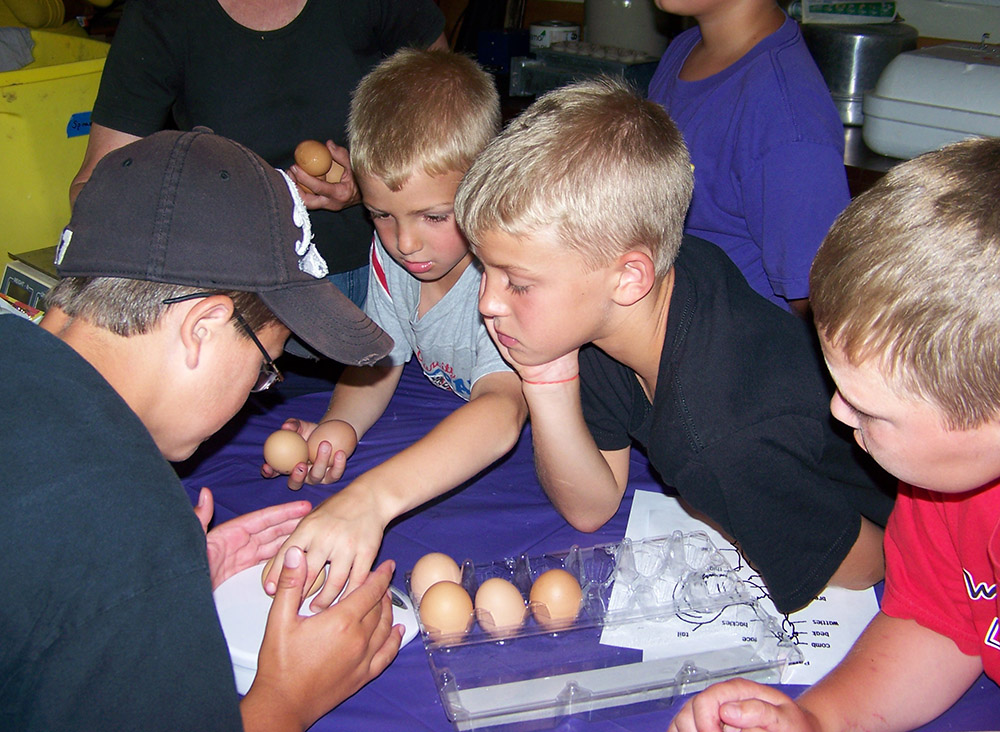
Children learn the process of collecting eggs and getting them ready for market at Earthrise Farm in Madison, Minnesota. (Courtesy of Kathleen Fernholz)
Children came to the farm to learn gardening. Young college students came as interns to grow their desire to cherish the soil. Eventually, we took legal steps to make these 12 acres of the farm site into a nonprofit 501(c)(3) known as Earthrise Farm Foundation.
The spirituality of Earth and her evolving story was the rudder of our ministry, and each year we celebrated a joyous Earth Sabbath Prayer Gathering, as our father raised the Earth flag and creative gestures of prayer were brought forth into the open "Earth Cathedral."
The term organic was uppermost in all that Earthrise Farm expressed. It was a word that our grandparents might not have known, even though they lived it. Yet an even more dynamic term was coming onto the horizon: regenerative!
Since the family farm site and tillable acres were in an irrevocable trust belonging to our nine siblings, the nonprofit status needed to be dissolved at the time of our parents' death. As the farm returned gradually back to the family, it seems that it had also evolved in other ways. There were no longer the big CSA gardens or many of the activities that once enlivened this piece of land. There was a new future moving beyond organic.
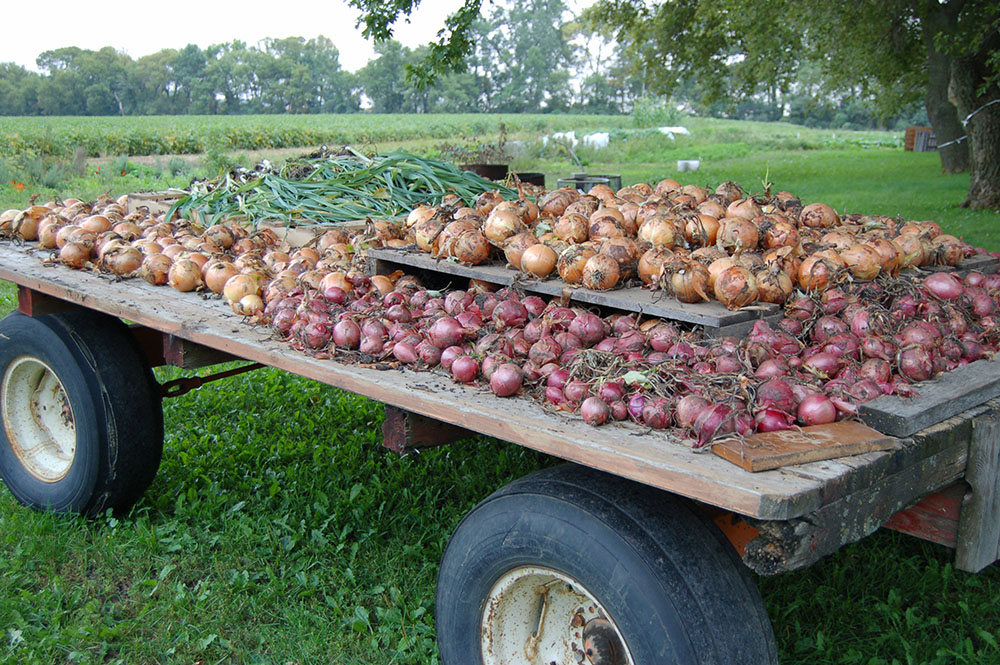
Onions, fruits of the harvest at Earthrise Farm in Madison, Minnesota (Courtesy of Kathleen Fernholz)
Annette and I were able to continue to live on the farm site and still call it Earthrise Farm since our brother Carmen now owned this land. All around us, exciting regenerative things were happening.
Luke Peterson, a young farmer, was now being mentored by Carmen into more regenerative farm practices. Luke wanted to practice more diversity in his farming. He had spent time working with the Department of Natural Resources and had concluded that diversity was key to his future in farming. Going organic on his own inherited 80-acre farm was a start for him.
There was also an overall increase in organic farms. This was encouraging because the process of becoming certified organic is no easy task; yet Luke was willing to do it.
This became a transitioning step from organic to regenerative agriculture. He would continue to farm without genetically modified organisms (GMOs), pesticides, herbicides, fungicides or synthetic fertilizers. He believed that this type of farming serves the ecosystem, environmental health, and the economic and social aspects of rural society.
Advertisement
Both he and Carmen worked together, and when asked just what they considered regenerative agriculture they found that it is not easy to give a simple answer in words — their practices expressed it more clearly.
They spoke of it as a way of thinking, in which the farmer needs to be creative, expansive, holistic, open and alive. It promotes soil health — and as we all know, that is what leads to quality food, healthier communities and economies.
Regenerative farming also promotes mimicking of nature, such as not tilling the soil each year. It is necessary to understand, know and become a friend to the soil. With less tilling, plants are left in the soil over the winter, thus preventing soil erosion and mitigating climate change. Another benefit is that all the living organisms in the soil have food for the winter.
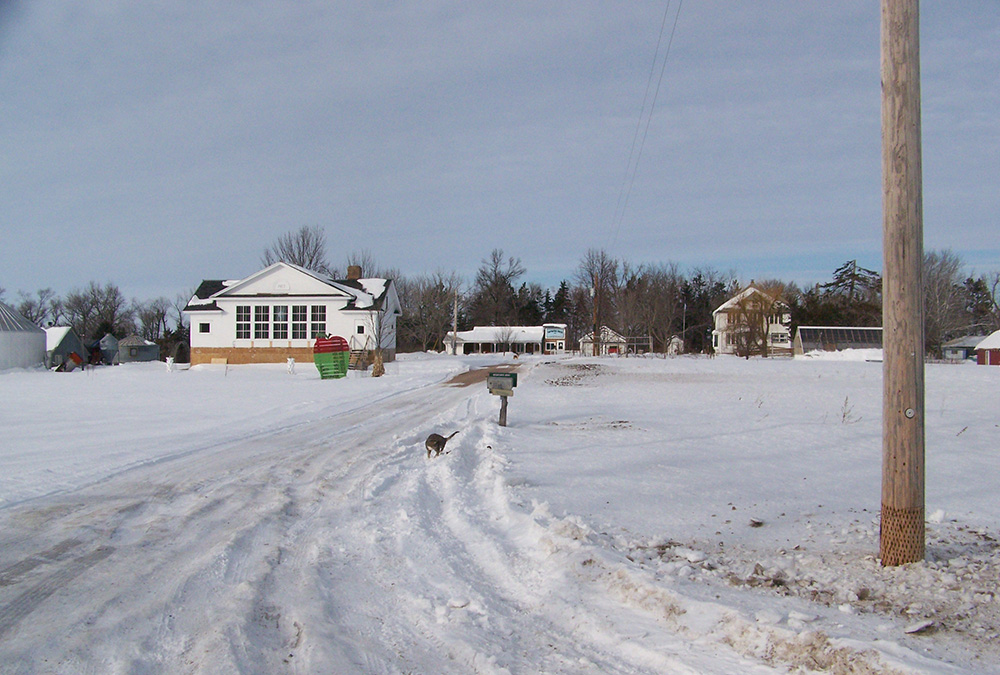
Earthrise Farm in winter (Courtesy of Kathleen Fernholz)
Crop rotation and a larger variety of crops became an important part of Luke's farming. All of them in some way promoted greater soil health. Many of them served as cover crops. He also began introducing pollinator strips on the edges of his field — something that has become even more necessary since many of our pollinators have been eradicated through the use of herbicides and pesticides.
As Carmen retired from active farming, Luke was put in charge of both Carmen's land and his portion of acres acquired as the Fernholz trust was dispersed. Some of it was once Earthrise land. Now Luke was able to expand his regenerative practices.
Carmen had already become part of a study on a perennial grain called Kernza. It was actually a wheatgrass that the Land Institute — along with the University of Minnesota — was developing. Carmen and Sally's daughter, Connie, was also part of the project. She said that this new study was "a web of people with a storied vision to make agriculture, farmers and the world better."
Luke wasted no time to be part of this project by planting Kernza on the Earthrise Farm. He confirmed that sowing a perennial grain makes it unnecessary to till the soil after each summer crop. Less carbon is extracted and put into the air. The roots can stay in the ground for at least three to four years. Kernza roots can grow down as deep as 10 feet, thereby bringing up plant food that otherwise might never be used to enrich the soil or the plants we grow and eat.
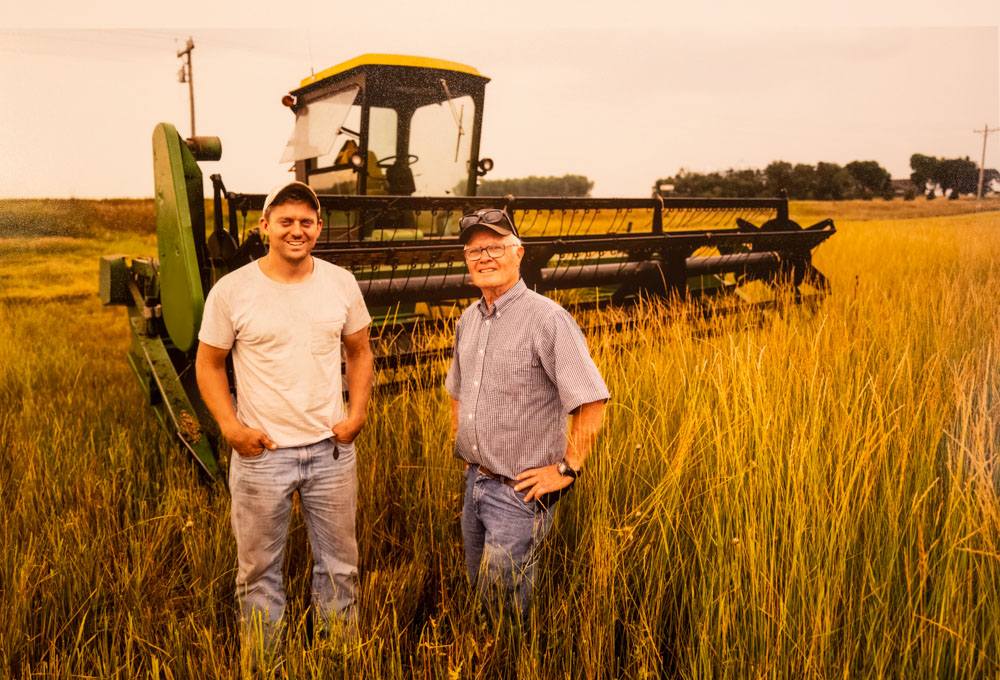
Luke Peterson and Carmen Fernholz in a Kernza field, with their gleaner ready to harvest the summer crop (Photo by Dodd Demas for Friends of the Mississippi River)
A Kernza field could also serve as grazing space for livestock, adding their natural fertilizer to the soil. Can you imagine not having to plant or till for at least three or four years?
The grain was being grown for flour used by local bakeries, since it is a close cousin to wheat. It has also been featured at the Minnesota State Fair. Surprisingly, it also began to be on tap at breweries across the state as a new beer.
So even though Annette and I were not that familiar with the term regenerative farming when we carried on our Earthrise mission, some of our practices were "starters," as we also practiced crop rotation, mulched and enriched the soil each year, and grew to love and learn from the soil itself.
In the process, we brought together not only the environmental community, but also the local people. In so many ways, Earthrise became a center that soon moved to the local environment, the local community and — we hope — to a larger, more aware world. Regenerative farming will always be a work of love and community-building in progress.
